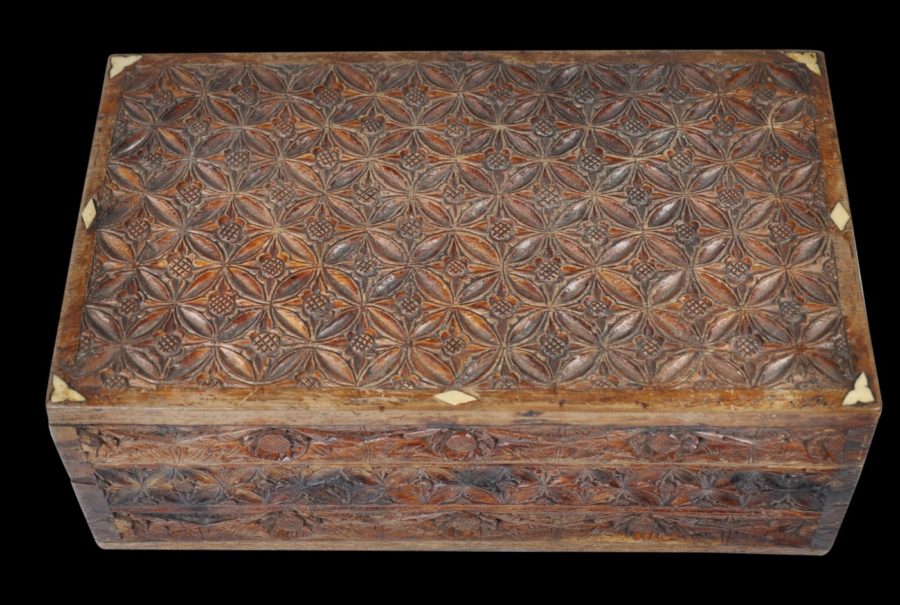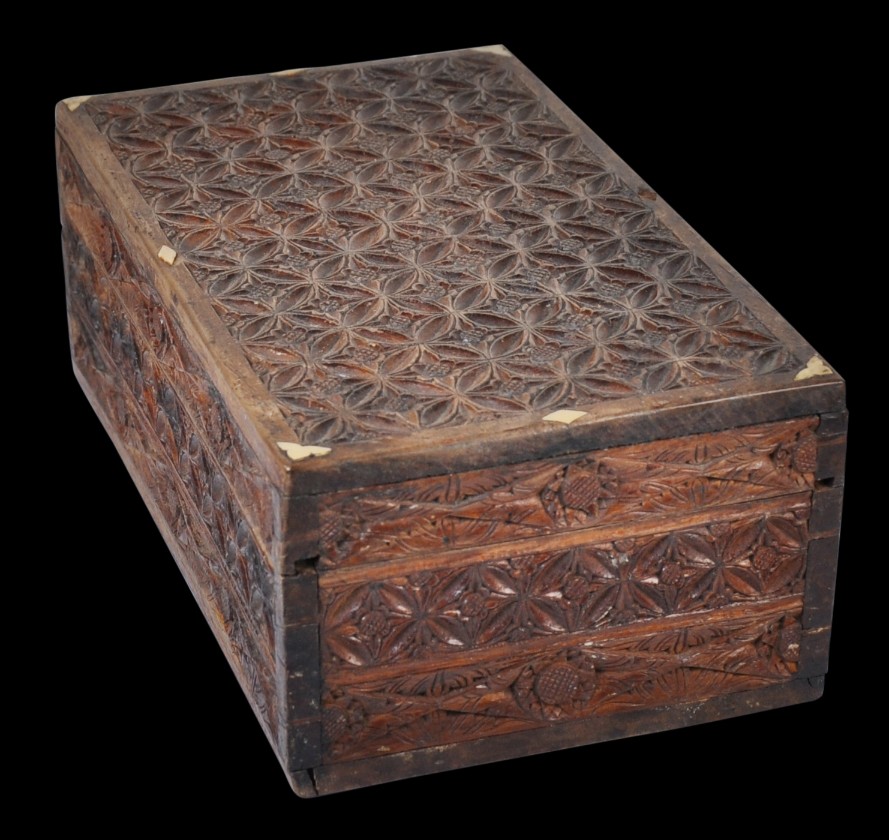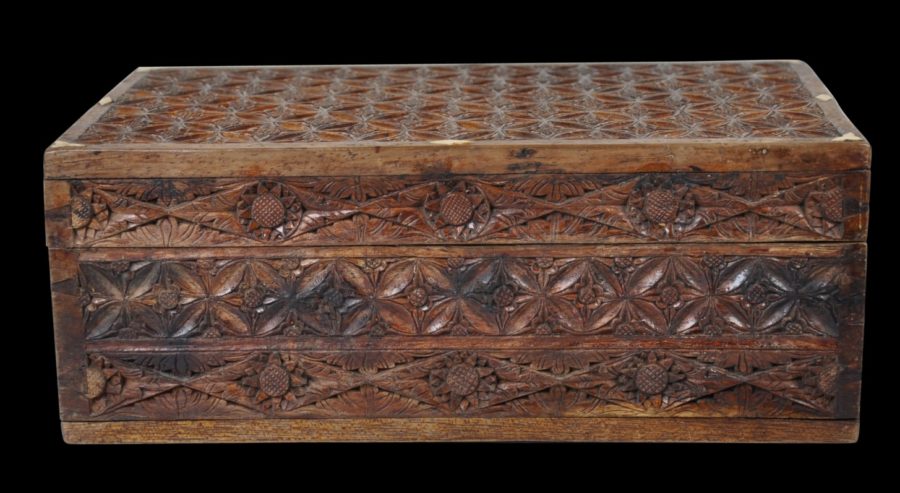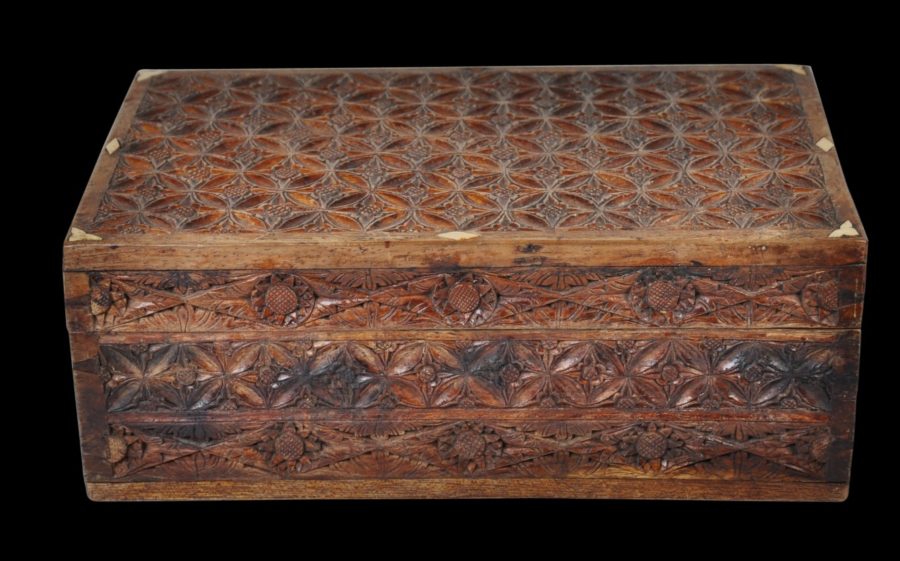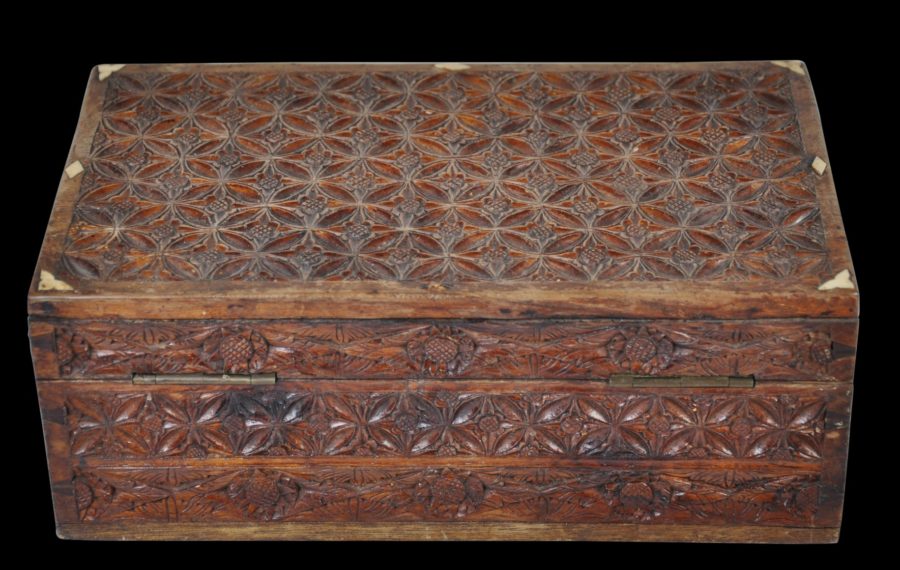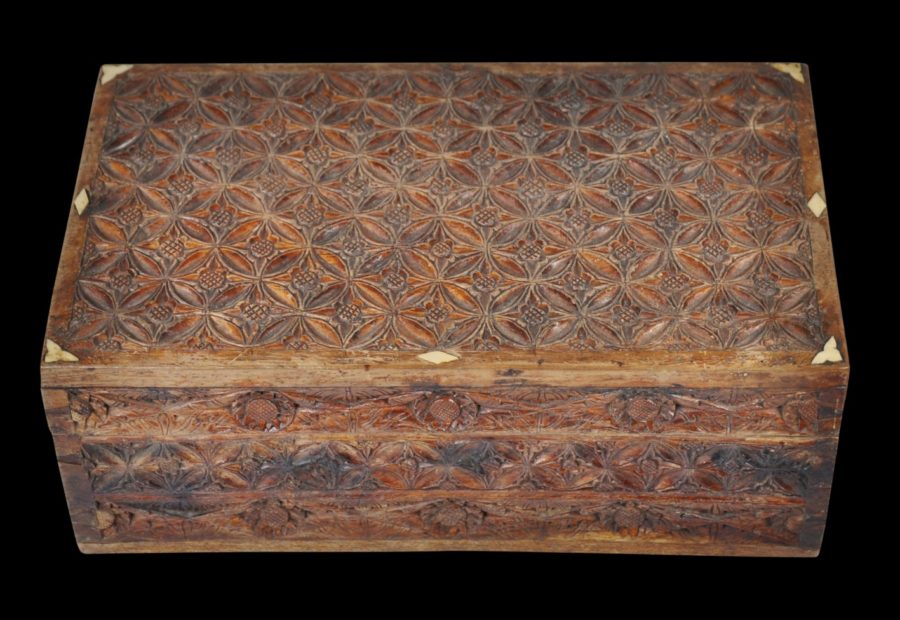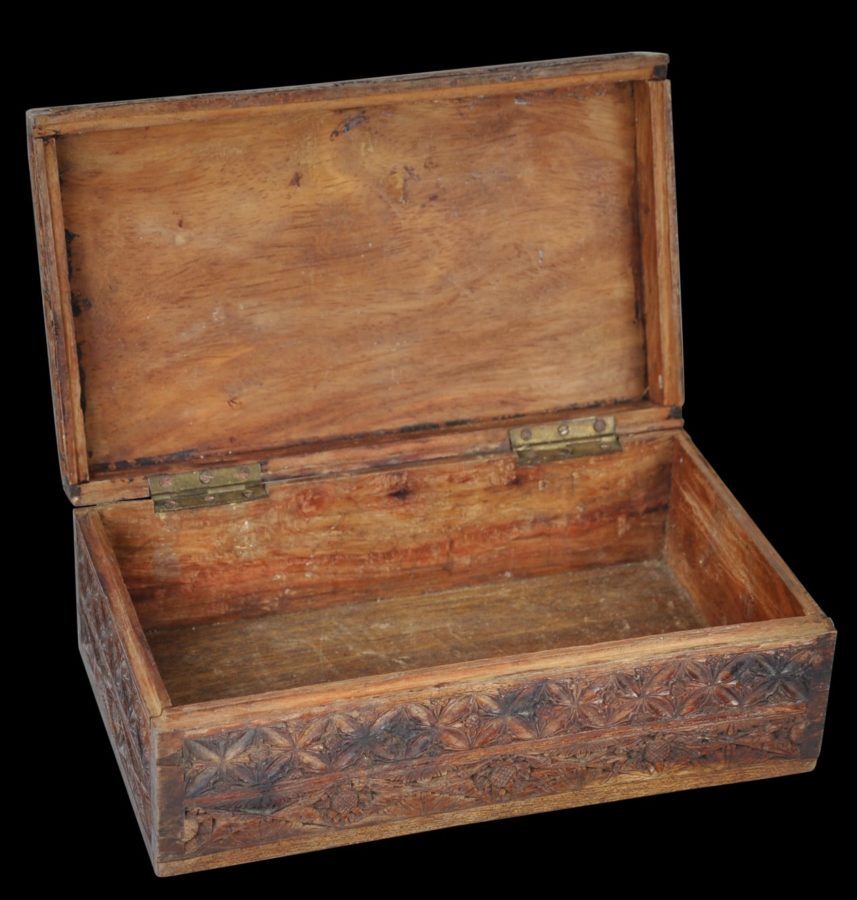This pleasing book is typically Malay in its design and conception. It is both decorative and utilitarian. The cover is hinged and its is carved in relief on all sides with repeated interlocking floral trellis design. The sides are also decorated with lower and upper borders of a repeated stylised sunflower motif, a motif that is also commonly seen on Malay silverware.
The cover is inlaid with small tiles of bone (one missing).
The box probably had no particular proscribed use. It might have held jewellery and other items of adornment, or perhaps was used as a betel box. It might even have held the tackle for a Malay fisherman.
The Malay Peninsula once was covered with thick, verdant jungle. Timber was in abundant supply and so the Malays counted woodcarving as among their most important crafts.
The wood that has been used most probably is cengal wood (Neobalanocarpus heimii), a variety of wood that is (or was) common across the Malay Peninsula.
The box is in fine condition with obvious age.
References
Islamic Arts Museum Malaysia, The Message and the Monsoon: Islamic Art of Southeast Asia, IAMM Publications, 2005.
Leigh, B., The Changing Face of Malaysian Crafts: Identity, Industry and Ingenuity, Oxford University Press, 2000.
Noor, F. & E. Khoo, Spirit of Wood: The Art of Malay Woodcarving, Periplus, 2003.


